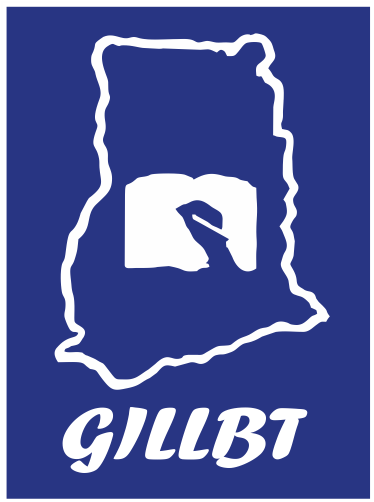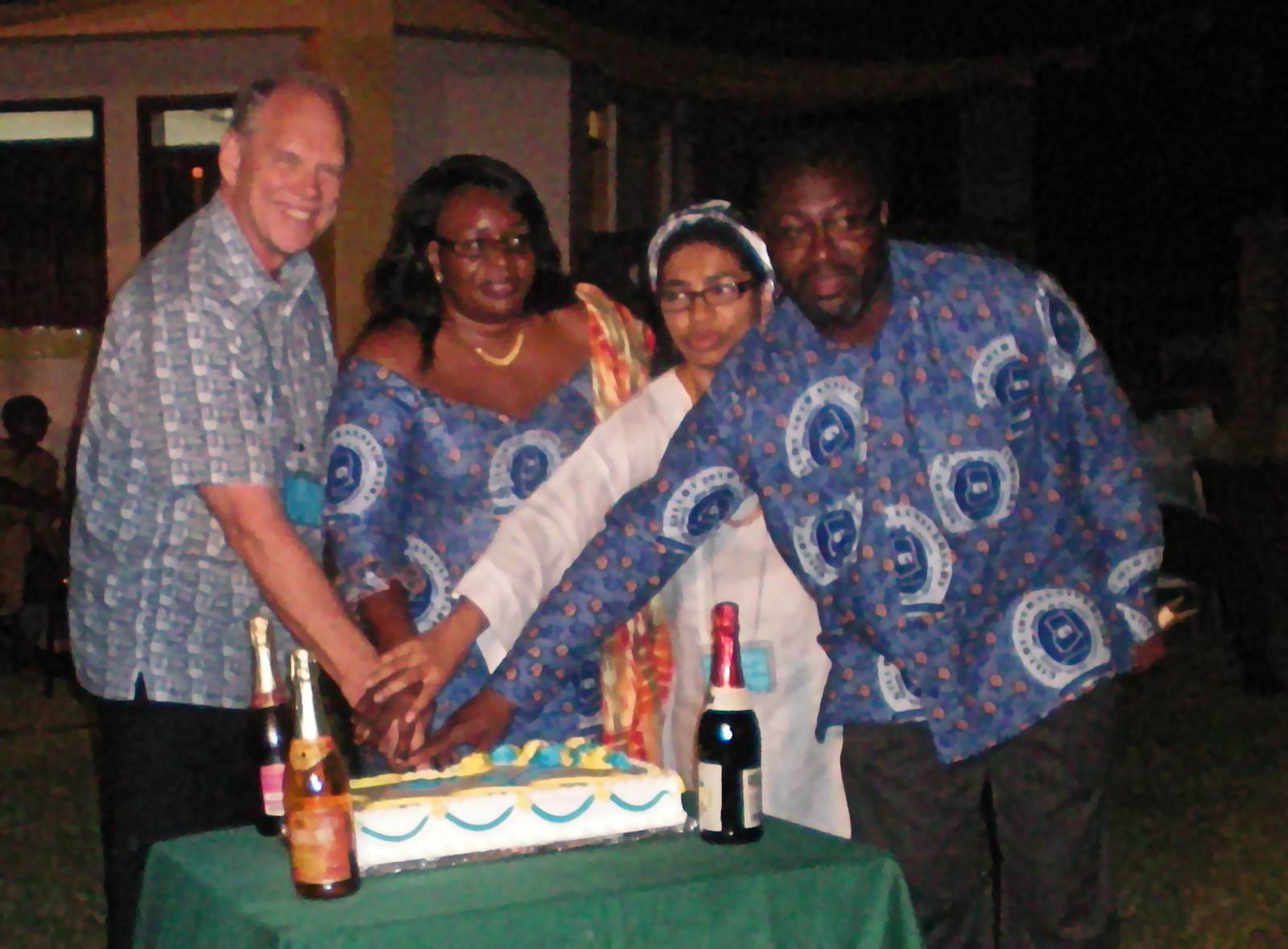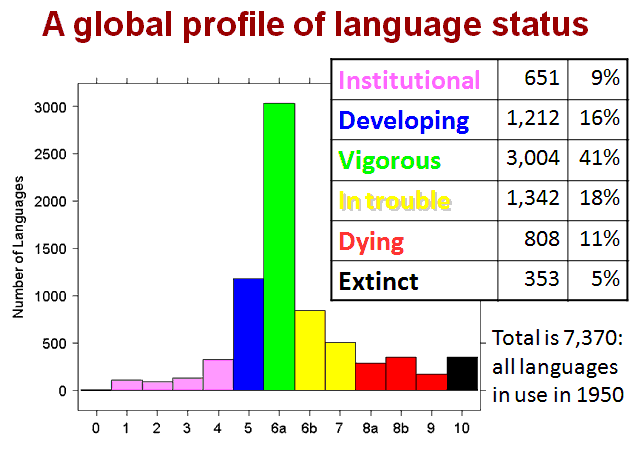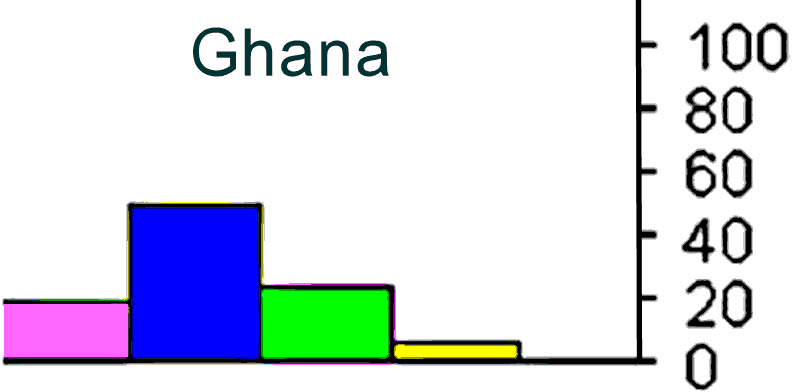On April 12-14 2012, the Institute of African Studies,Universityof Ghana, Legon and Ghana Institute of Linguistics, Literacy and Bible Translation (GILLBT) organized a conference to celebrate 50 years of academic collaboration in language development.
The theme for the conference was “Language and Culture in National Development”.
Dr. Gary F. Simons, Chief Research Officer for SIL International presented a paper on Language development versus language endangerment: Assessing the situation worldwide
His research was based on data from the Ethnologue- Languages of the World, 16th edition. M. Paul Lewis, ed. 2009 as the major reference work on the language situation in the world (http://www.ethnologue.com). The Ethnologue lists 6,909 living languages + 421 that are dormant or extinct since 1950.
Dr. Gary Simons groups languages into the following six categories, in descending order of language vitality – that is, the likelihood that the language will survive.
| Institutional | The language has been developed to the point that it is used and sustained by institutions beyond the home and community. (Violet in the graphic below) |
| Developing | The language is vigorous and is being used in written form in parts of the community, though literacy is not yet sustained through a formal institution. (Blue) |
| Vigorous | The language is unwritten and in vigorous oral use among all generations. (Green) |
| In trouble | Intergenerational transmission is in the process of being broken, but the child-bearing generation still speaks the language so revitalization efforts might be able to restore transmission of the language in the home. (Yellow) |
| Dying | It is too late to restore natural intergenerational transmission in the home. (Red) |
| Extinct | The language has fallen completely silent. (Black) |
The following graph, from Simon’s presentation, shows how many languages fall into each category.
The following are conclusions from his research:
- The global survey of language status shows that:
- Languages are healthiest in Africa: only 15% of living languages are in trouble or dying.
- By contrast, 56% are in trouble or dying in the Americas, 33% in the rest of the world.
- Within Africa, western Africa has the most languages:
- 878 languages, with only 7% in trouble or dying
- 159 (or 18%) are Developing and 65 (or 7%) are being sustained in institutions like government, media, education
Simons also presented the situation inGhana, as follows:
This graph shows that:
- Ghana’s Language development has been exemplary. A relatively high number of Ghana languages are used in written form and sustained by institutions, such as schools. Comparing the blue and green bars in the first and second graphs shows that Ghana has a high percentage of developed languages.
- In Ghana, written languages now far outnumber unwritten languages
- The next challenge for Ghana is to move the languages in the Developing category to the Institutional category




This is a good and revealing document
Interesting paper with strategic implications.
It does indeed have strategic implications. This analysis leaves us with clear directions forward
This is a good paper.